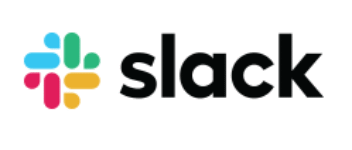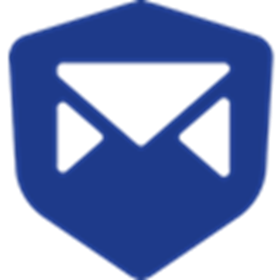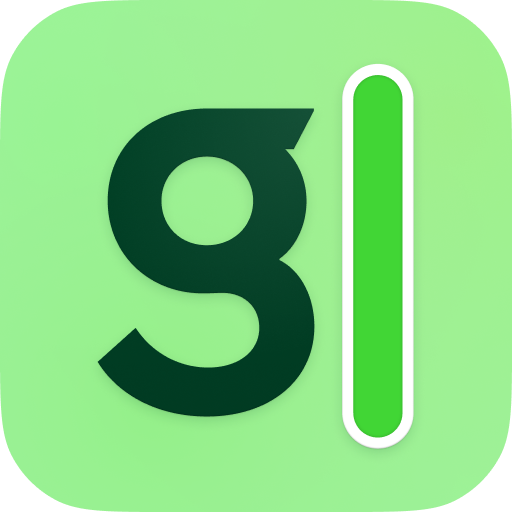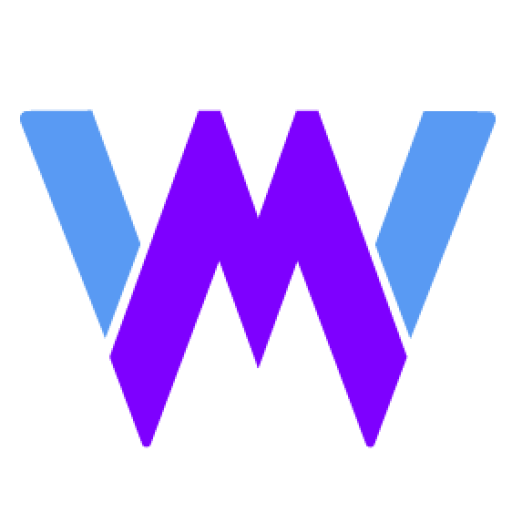Introduction
If your team is drowning in scattered messages, missed updates, or disjointed workflows, you’re not alone. Efficient communication is one of the toughest challenges growing teams face.
That’s exactly where Slack enters the conversation.
Slack isn’t just another messaging app. It’s designed to streamline collaboration, organize conversations, and cut through digital clutter – all while integrating with the tools your team already uses. Whether you’re managing a remote workforce, coordinating across departments, or just trying to stay aligned on projects, Slack promises to be the central hub for it all.
But is it truly worth the investment? Or is it just glorified group chat?
In this comprehensive review, you’ll get a closer look at how Slack actually performs in real team environments. We’ll explore its strengths, where it falls short, what it costs, and whether it fits your workflow or not.
By the end, you’ll have a clear understanding of:
- What Slack does (and what it doesn’t)
- How does it compare with tools like Microsoft Teams or Zoom
- Which plan fits your team size and budget
- Whether Slack boosts productivity or just adds another layer of noise
Let’s dive into what makes Slack stand out, and whether it’s the right chat solution for your business in 2025.
Overview
What is Slack?
Slack is a business messaging platform built to help teams communicate more effectively, without relying on email threads or scattered apps. At its core, Slack functions like a chat tool, but it’s far more than just instant messaging.
Think of Slack as your team’s digital HQ – a single workspace where conversations, files, tools, and updates come together in real time.
🔍 A Quick Look at What Slack Offers
- Real-time messaging in public and private channels
- Voice and video calls with screen sharing
- Workflow automations and Slackbot assistants
- File sharing and searchable archives
- Integrations with over 2,600+ third-party apps
Slack was launched in 2013 by Stewart Butterfield (yes, the guy behind Flickr) and was acquired by Salesforce in 2021. Since then, it’s grown to become one of the most widely used business communication platforms, especially for remote-first and hybrid teams.
It’s trusted by startups and global enterprises alike, including brands like Airbnb, Netflix, IBM, and Target. From tech companies to legal firms, Slack has become a go-to choice for teams looking to cut through communication chaos.
Why Teams Use Slack
- Centralised communication: All updates and project discussions stay in one place
- Async-friendly: Works great across time zones and work styles
- Customizable structure: You build your own workspace around how your team functions
- Less email clutter: Replaces internal email with faster, more collaborative messages
If you’re juggling too many channels of communication – from emails to meetings to DMs on various platforms – Slack can bring it all under one roof.
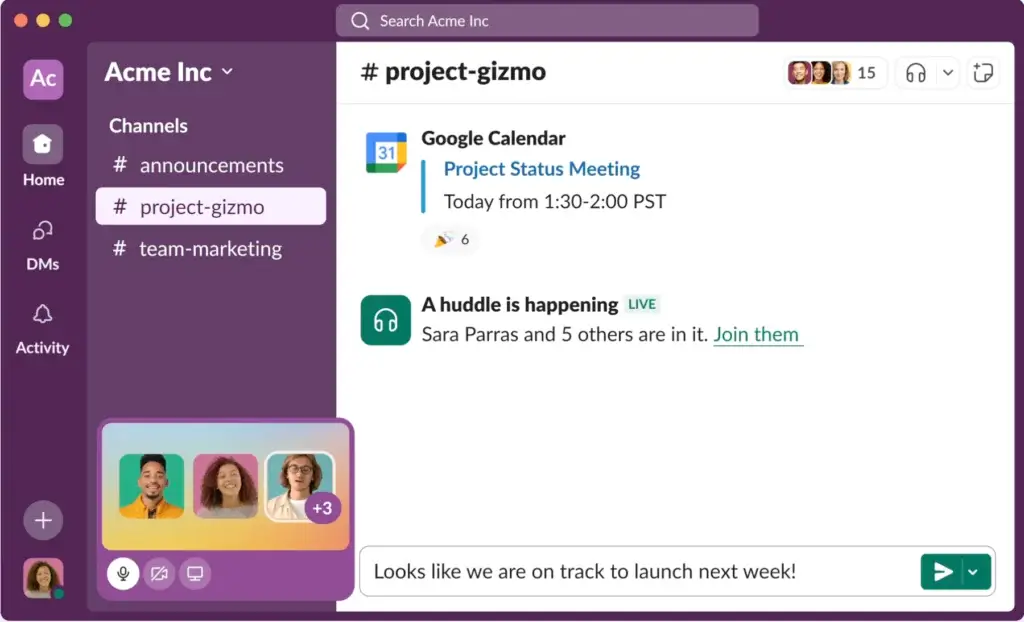
Software Specification
Slack Core Features
Slack is more than just chat. It’s packed with powerful tools that help teams collaborate faster, stay organized, and build workflows that actually make sense.
Let’s unpack the standout features that make Slack a leader in the world of business communication.
🧵 Channels & Direct Messaging
Everything in Slack starts with channels. These are topic-based spaces for team discussions – whether it’s #marketing, #product-launch, or #random for fun chats.
- Public channels for company-wide transparency
- Private channels for sensitive topics or leadership teams
- Direct messages (DMs) for one-on-one or small group chats
- Threaded replies to keep conversations focused and tidy
This structure keeps discussions organized and easy to find, unlike messy email chains.
🎧 Slack Huddles
Slack Huddles let you start audio or video chats instantly, right inside any channel or DM.
Perfect for:
- Quick stand-ups
- Brainstorming sessions
- Remote watercooler moments
They’re lightweight, informal, and a favorite for distributed teams that want to stay connected without scheduling full meetings.
📝 Canvas
Canvas is Slack’s answer to collaborative documentation. Inside every channel, you can create a canvas – think of it like a living doc for notes, links, and meeting takeaways.
It’s perfect for:
- Team onboarding
- Weekly agendas
- Shared resources
Each canvas lives alongside conversations, so context is always within reach.
🤖 Workflow Builder
This is where Slack goes beyond chat.
Slack’s no-code Workflow Builder lets you automate repetitive tasks and build custom flows like:
- Auto-welcome messages for new members
- Daily check-in reminders
- Approval requests are routed to managers
You don’t need to be technical. Drag-and-drop templates make it approachable for any team member.
🔌 Integrations
Slack’s ecosystem is a major win. You can connect with 2,600+ apps, including:
- Google Drive, Dropbox, Notion
- Asana, Trello, ClickUp
- Zoom, Microsoft 365, GitHub
Apps show up directly in conversations, so your team doesn’t have to switch between tools constantly.
🔍 Powerful Search & Archives
Slack makes it easy to search everything, even in old conversations or shared files.
- Search modifiers help you narrow results fast
- You can look by user, channel, or keyword
- File previews and message context are built-in
No more “Where was that link again?” moments.
These features work together to create a more fluid, connected team experience. Whether you’re launching a product, managing clients, or running daily ops, Slack provides the infrastructure to move quickly and stay aligned.
Pros and Cons
Advantages and Disadvantages
Before choosing any business tool, it’s important to weigh both its strengths and its trade-offs. Slack has a lot going for it, but it’s not a perfect fit for every team.
Here’s a clear-eyed look at what works well in Slack – and where it can stumble.
Positive
✅ Super intuitive and easy to adopt
✅ Keeps conversations organised
✅ Massive app ecosystem
✅ Encourages team culture and engagement
✅ Strong search functionality
✅ Great for async communication
Negative
❌ Can become noisy and overwhelming
❌ Higher cost at scale
❌ Video and voice features are limited
❌ Threaded replies can be confusing
❌ No built-in task management
✅ Pros
1. Super intuitive and easy to adopt
Slack’s clean design and user-friendly interface make it easy to get started, even for non-technical team members. You can jump in, create channels, and start chatting without a steep learning curve.
2. Keeps conversations organized
Channels and threads give every conversation a home. This helps reduce the chaos that often comes with group emails or scattered DMs.
3. Massive app ecosystem
Slack connects seamlessly with thousands of tools your team already uses. From project management platforms like Trello and Asana to calendars, file storage, and developer tools, everything works in one place.
4. Encourages team culture and engagement
Custom emojis, fun channels, huddles, and reactions make Slack a space for both work and team bonding, which is especially important in remote setups.
5. Strong search functionality
You can find any conversation, file, or link quickly with Slack’s robust search. It even pulls in results from integrations and app activity.
6. Great for async communication
Slack isn’t just for real-time chat. With threads, scheduled messages, and reminders, it supports flexible work styles across time zones.
❌ Cons
1. Can become noisy and overwhelming
Slack’s notifications can pile up fast. Without proper channel guidelines and notification settings, it’s easy for team members to feel distracted or burned out.
2. Higher cost at scale
While the free plan works for small teams, larger businesses will likely need a paid tier, and the per-user pricing can add up quickly.
3. Video and voice features are limited
Slack Huddles are great for quick chats, but they lack the advanced features of dedicated conferencing tools like Zoom or Google Meet.
4. Threaded replies can be confusing
Not everyone uses threads properly. When conversations break out of threads, it can lead to scattered discussions and lost context.
5. No built-in task management
Slack integrates well with tools like Asana or ClickUp, but it doesn’t offer native project management. If you’re hoping for built-in task tracking, you’ll need a separate app.
Slack excels at what it’s built for – fast, flexible communication. But to really make it work, your team needs clear usage guidelines and smart integration choices.
Software Capabilities
User Interface and Experience
One of Slack’s biggest advantages is how natural it feels to use. Whether you’re a tech-savvy developer or a first-time user, Slack’s interface is built to be welcoming and efficient.
Let’s walk through what it’s like to use Slack across different devices and how it adapts to team needs.
🖥️ Web & Desktop Experience
Slack’s desktop app and browser versions offer a nearly identical experience. The layout is clean and intuitive:
- Left sidebar shows workspaces, channels, and DMs
- Center panel is your active chat or canvas
- Top bar includes search, quick access to mentions, and settings
You can switch between workspaces with just a click, and notifications are color-coded and easy to manage.
Customisations make Slack feel personal:
- Dark mode, sidebar themes, and emoji packs
- You can star favorite channels or pin important messages for quick access
The desktop app is fast and stable, even for large teams with thousands of messages daily.
📱 Mobile App Experience
Slack’s mobile app is incredibly useful for staying in the loop on the go. It’s available on both iOS and Android, and syncs seamlessly with your desktop activity.
Key highlights:
- Push notifications are configurable by channel or keyword
- File previews and replies are easy, even on small screens
- Huddles and calls can be joined directly from the app
While mobile isn’t ideal for long, threaded discussions or deep searches, it’s perfect for quick check-ins and urgent responses.
🔍 Navigation & Usability
Search is always just a click away, and Slack’s command bar lets you jump to channels, start new messages, or run shortcuts with ease.
New users often appreciate:
- Onboarding tips and Slackbot prompts
- Suggested channels based on activity
- Tooltips and integrations that guide setup naturally
Experienced users can take advantage of advanced keyboard shortcuts, slash commands, and workspace bookmarks for super-fast navigation.
Overall, Slack strikes a balance between power and simplicity. It gives teams everything they need to communicate efficiently, without overwhelming them with complexity.
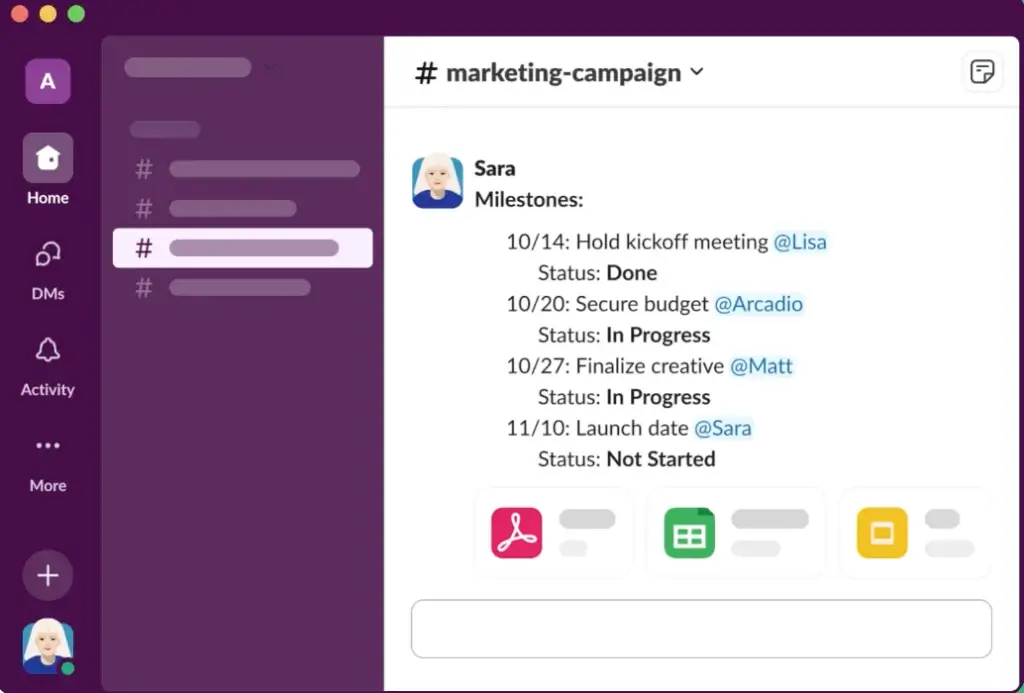
Pricing and Packages
Pricing and Plans for Slack
Slack offers a flexible pricing model designed to accommodate solo professionals, small teams, and enterprise organizations. Whether you’re just getting started or scaling up, there’s a plan that fits – but it’s important to understand what you’re really paying for.
Let’s break down the four main pricing tiers.
| Plan | Monthly Price (per user) | Key Features |
| Free | $0 | 90-day message history, 10 integrations, 1:1 Huddles |
| Pro | $7.25 | Full history, unlimited integrations, group Huddles |
| Business+ | $12.50 | Advanced admin tools, SSO, 24/7 support |
| Enterprise Grid | Custom Pricing | Enterprise-grade security, unlimited workspaces, DLP & compliance |
💡 What’s Included in Each Plan?
Free Plan
Ideal for freelancers or very small teams testing Slack. You get:
- 90 days of message history
- Up to 10 app integrations
- One-on-one Huddles
- File sharing and searchable conversations
Pro Plan
Designed for growing teams that need more flexibility. Adds:
- Unlimited searchable message history
- Unlimited app integrations
- Group Huddles with screen sharing
- Guest access and scheduled messages
Business+ Plan
Best for mid-sized teams with security and admin needs. Includes:
- Advanced identity management (SAML SSO)
- User provisioning and audit logs
- Data exports
- 24/7 priority support
Enterprise Grid
Built for large-scale organizations with complex needs. Offers:
- Multiple interconnected workspaces
- Enterprise-level data loss prevention (DLP)
- HIPAA/GDPR compliance tools
- Dedicated account manager and support
Is Slack Worth the Cost?
It depends on your team’s size, structure, and how heavily you rely on real-time communication.
For small remote teams, the Pro plan hits the sweet spot. For enterprise orgs managing sensitive data, the Enterprise Grid offers peace of mind with robust compliance features.
💬 Pro Tip: If you’re using Slack daily and rely on integrations or message history, upgrading from the free plan is a game-changer.
Feedbacks
User Feedback and Reviews
Slack has built a strong reputation across industries, but how does that hold up in the eyes of real users?
To give you an unbiased view, we analyzed user feedback from trusted platforms like G2, Capterra, and TrustRadius. Here’s what users are consistently saying.
Platform Average Rating Notable Praise G2 4.5/5 Clean UI, integrations Capterra 4.6/5 Easy onboarding, team chat TrustRadius 8.5/10 Workflow automation
🌟 What Users Love About Slack
Easy to use and adopt
Teams consistently praise Slack’s intuitive interface. New users feel comfortable within minutes, and many highlight how easy it is to bring new hires up to speed.
Strong collaboration capabilities
Users love how Slack enables real-time communication across departments. Channels, threads, and integrations allow for a structured yet fluid experience.
Excellent integrations
Slack’s app ecosystem stands out. From file sharing to task management, users appreciate that they can connect the tools they already rely on, all within Slack.
Reduces internal email
A common theme in reviews: “We’ve basically stopped using internal email.” Slack replaces messy back-and-forth emails with fast, searchable chat.
⚠️ Common Complaints and Frustrations
Notification overload
Without proper setup, Slack can quickly become noisy. Users mention being overwhelmed by channel updates, pings, and threads, especially in large organizations.
Search sometimes feels limited
Although powerful, some users say that search doesn’t always surface the message they’re looking for, especially if a workspace has years of data.
Expensive at scale
Many small to mid-sized businesses find Slack’s pricing reasonable. But larger teams often say it gets pricey when you multiply per-user costs across departments.
Limited built-in video features
Slack Huddles are great for informal calls, but users often default to Zoom or Teams for more robust video meetings and webinar-style needs.
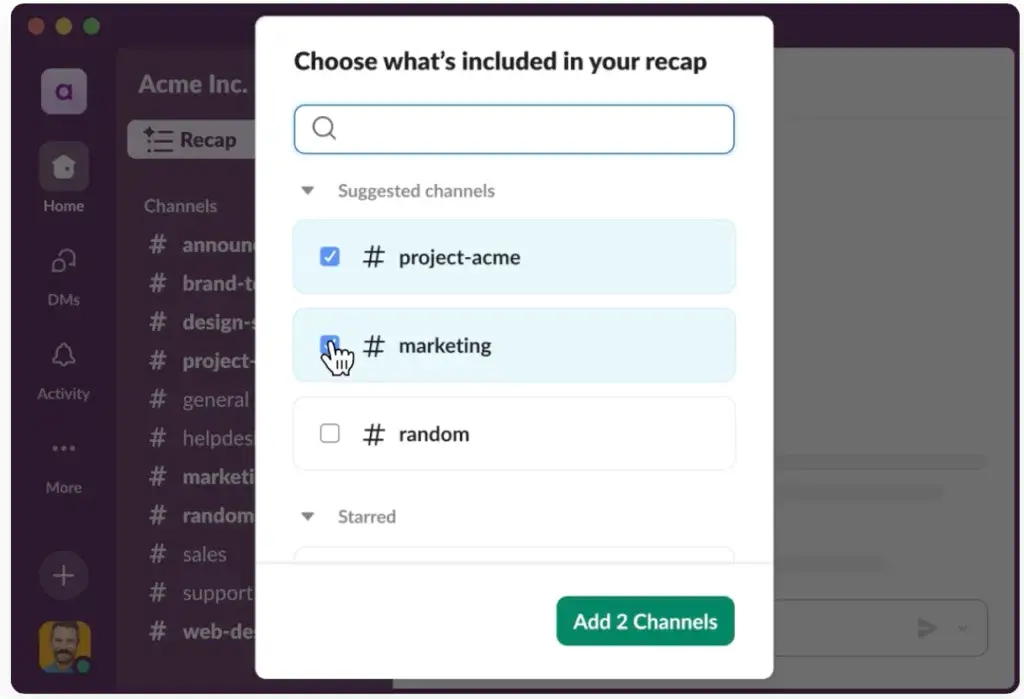
Slack VS Alternatives
Comparison with Other Software
Slack isn’t the only player in the team chat space. Depending on your team’s size, workflow style, and budget, other tools might be a better fit – or a solid complement.
Let’s compare Slack with two rising alternatives: ClickUp Chat and Zenzap.
| Feature | Slack | ClickUp Chat | Zenzap |
| Core Focus | Messaging & Collaboration | Task Communication | AI-Powered Team Chat |
| Threads | ✅ | ❌ | ✅ |
| Voice/Video Calls | Huddles built-in | Requires integration | Light call support |
| Integrations | 2,600+ apps | Only within ClickUp | Limited but growing |
| AI Features | Light AI tools | Basic templates | Summaries, inbox cleanup |
| Best For | Mid to large teams | Project-centric teams | Startup teams, async work |
Slack vs ClickUp Chat
ClickUp Chat is built into the broader ClickUp platform, which focuses on task and project management. Its chat tool is tightly integrated with tasks, docs, and dashboards.
How they compare:
- Slack is chat-first. Everything starts with messages and expands with integrations.
- ClickUp Chat is task-first. Messaging supports project updates and workflow collaboration.
- Slack offers more advanced messaging features, like threads, Huddles, and deep app integrations.
- ClickUp Chat is better if your team already lives in ClickUp and wants built-in communication, not a separate app.
- Slack supports real-time communication at scale; ClickUp Chat is more focused on project-based messages.
👉🏼 Read the FULL ClickUp Chat Review here
💬 Bottom line: Slack is more powerful for communication alone, but ClickUp Chat works well for teams who want everything in one PM tool.
Slack vs Zenzap
Zenzap is a newer, AI-powered team communication tool designed to cut back on noise and improve signal. It’s growing fast among startups and hybrid teams.
Key differences:
- Zenzap focuses on AI summarisation, meeting recaps, and inbox control.
- Slack emphasizes real-time messaging, team culture, and integrations.
- Zenzap has built-in tools to help reduce unnecessary chatter, which helps teams stay focused.
- Slack offers more mature features and enterprise support, including compliance, security, and scalable architecture.
Zenzap is gaining traction for teams that feel Slack is too noisy or overwhelming. It’s lighter, more focused, and leans heavily on automation.
👉🏼 Read the FULL Zenzap Review here
💬 Bottom line: If you’re overwhelmed by Slack’s message volume, Zenzap offers a calmer alternative. But for enterprise-grade collaboration, Slack is still ahead.
Conclusion
Is Slack the Right Fit for Your Business?
So, is Slack the right team chat tool for your business in 2025?
If your team values fast, organized, and integrated communication, Slack is one of the best tools available. It combines flexibility, real-time messaging, and a huge app ecosystem in a way that few competitors can match.
But it’s not without its caveats. Larger teams may need clear internal rules to prevent notification overload, and smaller teams might find the per-user cost adds up quickly.
Final Takeaways
- Slack is perfect for teams that thrive on collaboration, especially across departments, locations, and time zones.
- It shines in companies that already use tools like Google Workspace, Zoom, Trello, or Asana – thanks to its seamless integrations.
- If your team struggles with scattered communication, Slack’s channels and threads bring structure without complexity.
- However, if you’re already using a project management tool like ClickUp, or need built-in focus tools, something like Zenzap might suit your workflow better.
Our Recommendation:
Slack remains a top-tier choice for team chat and internal communication. It’s reliable, scalable, and gets better the more you use it, especially if your team leans into its full feature set.
If you’re ready to move away from chaotic email threads and fragmented messaging, Slack is absolutely worth exploring.
Frequently Asked Questions (FAQs)
Have more questions?
1. What is Slack used for?
Slack is a team communication platform used to organize conversations into channels, support real-time messaging, and integrate with business tools. It’s ideal for collaboration across teams and departments.
2. Is Slack free to use?
Yes, Slack has a free plan that includes access to channels, direct messaging, and limited message history. It’s great for small teams just getting started.
3. How much does Slack cost per user?
Slack’s paid plans start at $7.25 per user/month (Pro) and go up to $12.50 per user/month (Business+), with custom pricing for Enterprise Grid plans.
4. What’s the difference between Slack Free and Pro?
The free plan limits message history to 90 days and supports only 10 integrations. The Pro plan offers unlimited history, unlimited apps, and advanced features like group Huddles and scheduled messages.
5. Can Slack replace email?
Slack reduces internal email significantly but doesn’t eliminate email entirely. It’s best for team communication, not external client correspondence.
6. Is Slack good for remote teams?
Yes, Slack is ideal for remote and hybrid teams. Features like channels, Huddles, async messaging, and integrations help teams stay connected across time zones.
7. How secure is Slack?
Slack uses enterprise-grade encryption and complies with data privacy standards like GDPR and HIPAA (Enterprise only). Admins can control access and monitor usage.
8. Does Slack support video calls?
Yes, Slack offers video and audio calls through Huddles. While suitable for quick check-ins, teams needing advanced video conferencing may still prefer Zoom or Google Meet.
9. What apps can I integrate with Slack?
You can connect Slack to over 2,600 apps, including Google Drive, Asana, Zoom, Trello, GitHub, and more – all without leaving the platform.
10. What are the top Slack alternatives?
Top alternatives include Microsoft Teams (especially for Office 365 users), ClickUp Chat (for project-based teams), and Zenzap (for AI-driven focus and async communication).

